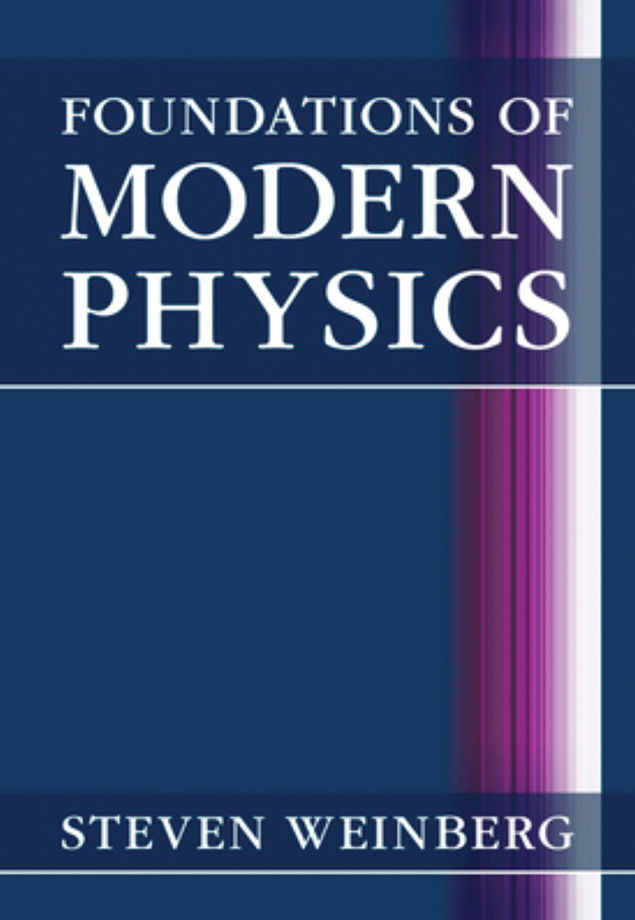Foundations of Modern Physics, by Steven Weinberg, Cambridge University Press

Knowing that it will be his last, it is with a mixture of gratitude and sadness that we welcome the new monograph Foundations of Modern Physics, a textbook for undergraduate students and a source of reflection for teachers and researchers, by the late Steven Weinberg. If we exclude his works for the layperson such as The First Three Minutes or Dreams of a Final Theory, this is Weinberg’s first book for undergraduate students. The idea behind it is plausible but rarely stressed: the foundations of modern physics ultimately rest on the successful development of the notion of fundamental constituents. While common wisdom attributes the origin of modern physics to Galileo and Newton, the original corpuscular intuition goes back to Democritus, Epicurus and Lucretius. Weinberg already suggested in To Explain the World: the Discovery of Modern Science that the existence of fundamental constituents, after nearly two millennia of relentless scrutiny, is the ultimate foundation of all the physical sciences.
With smooth language enriched by historical remarks, Weinberg describes the tortuous path that corroborated the corpuscular intuition of the Greek thinkers. The perfect gases, described in chapter 1, led to the Avogadro number, the first fragile bridge between the macroscopic and the corpuscular description of matter. In chapter 2, readers surf through the Maxwellian theory of transport phenomena that define the transition between hydrodynamics and the atomic (or molecular) hypothesis. This ends with three pivotal landmarks: the discreteness of the electric charge, the celebrated results of Einstein and Perrin on Brownian motion (allowing a direct measurement of the Avogadro number) and the black-body radiation puzzle. Chapters 3 and 4 are devoted to early quantum theory and the special theory of relativity. Quantum mechanics is introduced in chapter 5 and the physics of the atomic nucleus in chapter 6. The tenets of the corpuscular description of matter and radiation are combined in the framework of quantum field theory in the final chapter.
By using the notion of fundamental constituents as the guiding historical and theoretical principle, Weinberg manages to lay the foundations of diverse disciplines (hydrodynamics, statistical mechanics, kinetic theory, thermodynamics, special relativity, quantum mechanics and even field theory) in less than 300 pages.
The flamboyant imagination of Lucretius in De rerum natura could not have conceived of the possibility of human missions to Mars or the existence of colliders. Nonetheless, his corpuscular intuition was one of the essential seeds that eventually developed into the roots of modern physics. We must all admit, despite claims to the contrary, that modernity is not bound to coincide with recency because good ideas take an exceedingly long time to mature. Weinberg’s time capsule for students of future generations is that truly modern physicists are not always contemporaries.







